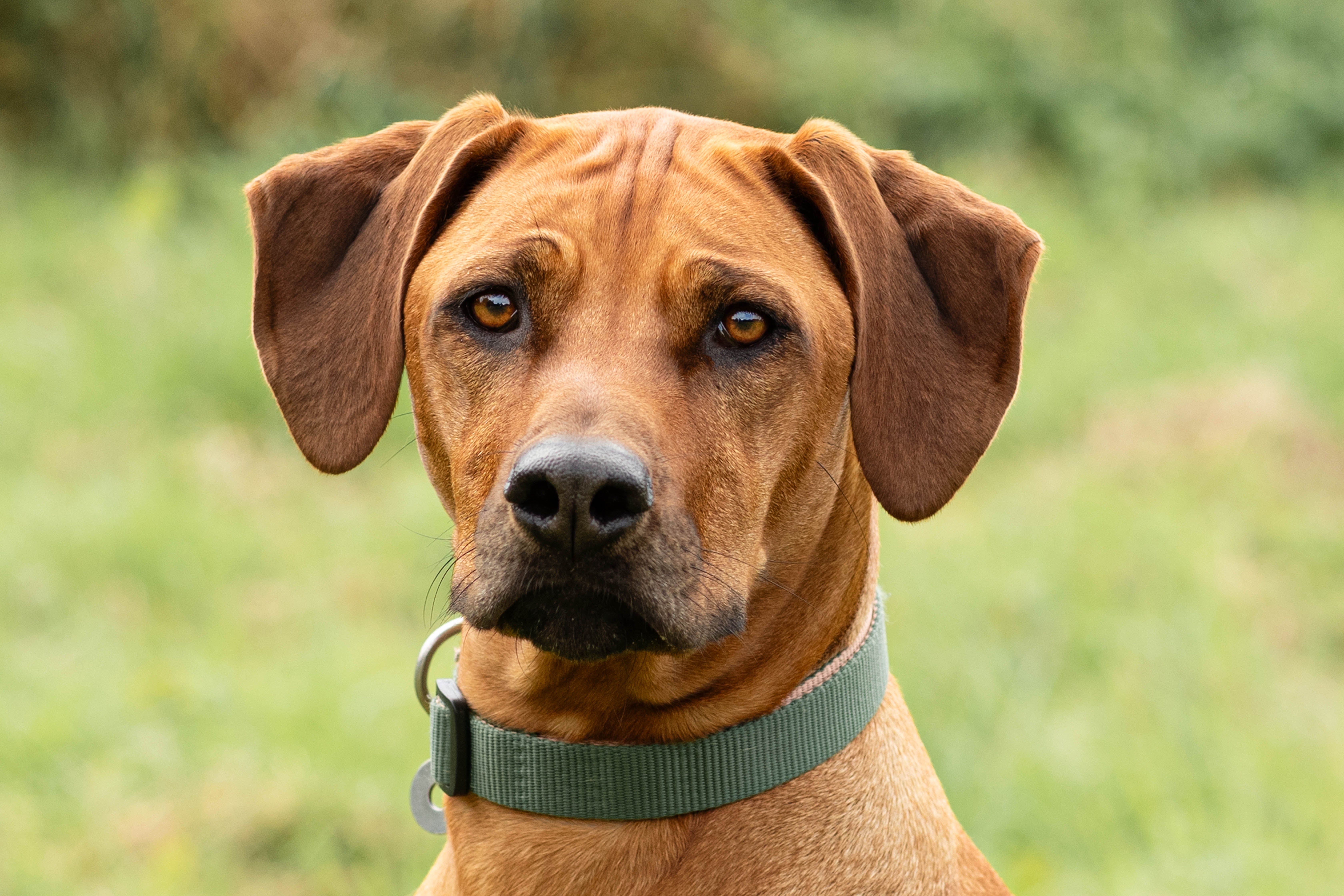Rhodesian Ridgeback
Speed, power, and endurance come together in this African dog known for its protection skills and running ability. Athletic and sculpted, Rhodesian Ridgebacks feature a short and glossy coat that has adapted over time for living in extremely hot climates. Their defining feature is the ridge on their back, which starts with two twin whorls behind their shoulders and tapers to their hip bones. Gentle giants most of the time, Rhodesian Ridgebacks carry themselves with a dignified air.
Breed characteristics carousel
Learn More
Need to Know
- Dogs suitable for experienced owners
- Extra training required
- Generally healthy breed
- Enjoys vigorous daily walks
- Large dog
- Minimal drool
- Requires regular grooming
- Quiet dog
- Barks, alerts, and may be physically protective/suspicious of visitors
- Could have issues with unknown dogs but gets along with known dogs
- May need additional training to live with other pets
- May need additional supervision to live with children
- Needs a large yard and can live in suburban or rural areas
- Can be left alone occasionally with training
- AKC Registered Breed

Personality
Assertive without being aggressive, the Rhodesian Ridgeback is protective of their family units. They do well with older children but could be too bouncy for smaller ones. Strong-willed, independent, powerful, and large, they can come off as domineering. Two adult male Rhodesian Ridgebacks should not be left alone together. They are weary of strangers, although they do well with other dogs and sometimes cats if properly socialized with them.
European settlers brought Mastiffs, Great Danes, Bloodhounds, Pointers, Staghounds, Greyhounds, and more to South Africa in the 16th and 17th centuries. They mixed them with native Hottentot tribal hunting dogs with a ridge of hair growing down their back. These precursor dogs were known as devoted protectors of their families.
In the 1870s, these crossbreeds were taken to Rhodesia to track and protect humans from lions. These “lion dogs” were successful at their sentinel jobs and easily recognizable by the ridge on their backs. By the 1920s, many types of lion dogs existed and were streamlined into the Rhodesian Ridgeback.
They were first introduced to England in the 1930s and to America soon after, gaining popularity in the 1950s. Today they are one of the most popular hound breeds.
Owners will need to want to work hard at training and have access to large amounts of land for secure free running. While Rhodesian Ridgebacks love their families and are bonded, they are weary of strange people and dogs and can become protective. Socialization—and good fencing—is vital. They do best with no children in the home but could get by with older children.
An adult Rhodesian Ridgeback needs a couple of hours of exercise daily, ideally free running. They maintain strong hunting instincts so they should be in safe open spaces away from other dogs before being let off leash. They can also do long leash walks.
If you have a large fenced property, a Rhodesian Ridgeback will thrive. They can do ok in suburban areas but prefer rural ones where large swathes of land are theirs for running.
Grooming is blissfully low maintenance for the Rhodesian Ridgeback. Their shorthaired coats need a rubber grooming mitt rubdown about once or twice a week to keep them shiny and healthy.
Rhodesian Ridgebacks need plenty of exercise during the day and also need mental stimulation to prevent boredom. Jogging and hiking are two activities they could enjoy doing with their owners.
Despite being affectionate towards children in their families, they are not tolerant of those children’s friends or people they might perceive as strangers. They do best with homes with older children who can respect their boundaries or no children.
The cost of a Rhodesian Ridgeback from a breeder is significantly more than the cost of adopting one from a local shelter or rescue. The adoption fee usually covers additional items such as spaying or neutering, vaccines, and microchipping.

Learn more about feeding and caring for your Rhodesian Ridgeback on Purina.
Did You Know?
- Rhodesian Ridgebacks get their name from the ridge of hair that grows down their backs. It’s formed by the hair growing in the opposite direction of the rest of the coat, capped by two “crowns” or whorls directly opposite each other. The only other breed
- There might be a correlation between this ridge and a rare congenital skin condition.

